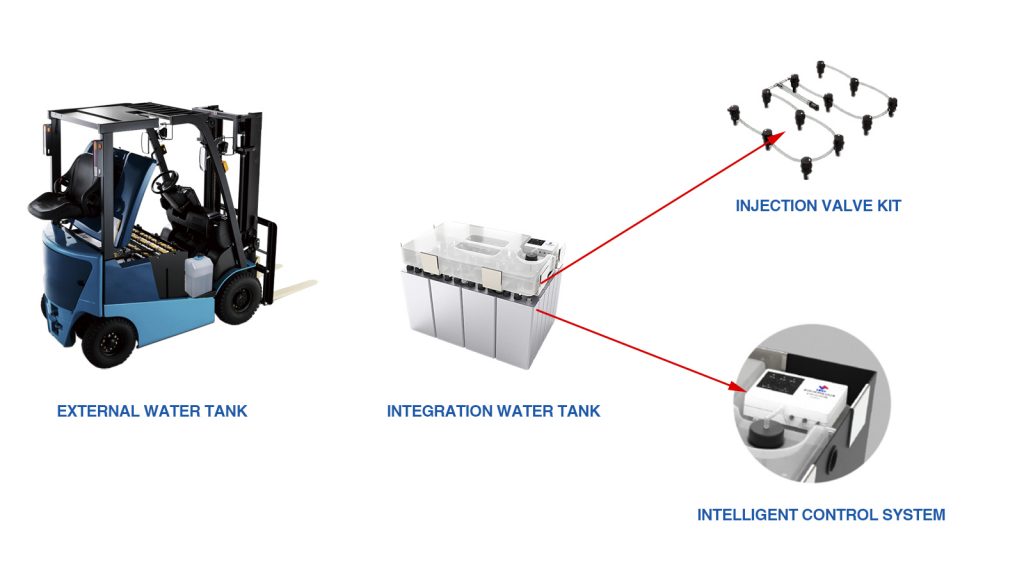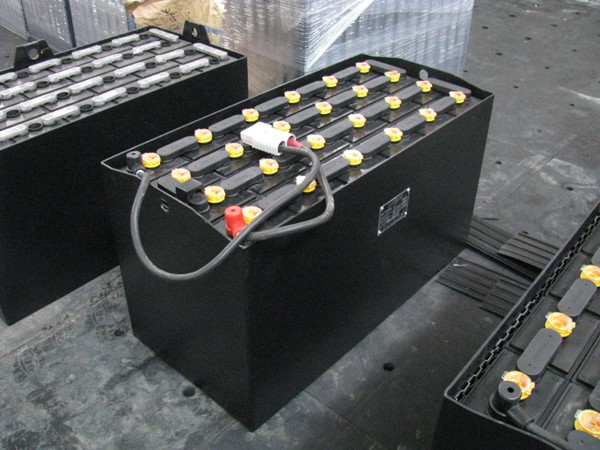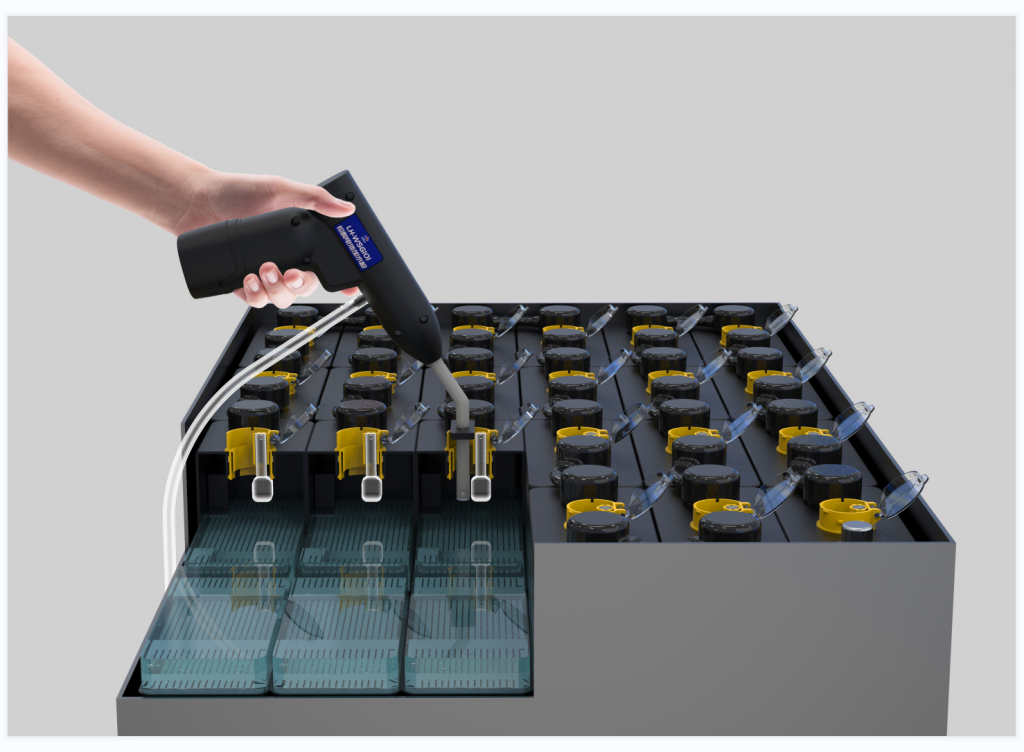Author: Lin Yongshan
Source:”China Chemical Trade·Late Period” 2018 Issue 03
Summary:This article mainly analyzes the impact of battery water loss on battery capacity, considers several aspects of the impact, and how to better clarify the content of its impact, to ensure that the impact of battery water loss on battery capacity is within a reasonable range
Keywords: battery; water loss; capacity
In the process of using batteries, we must pay full attention to the impact of battery water loss on battery capacity, and try to avoid battery water loss during use and reduce its adverse effects.

1.Factors affecting battery capacity
Battery is a device that can convert electrical energy into chemical energy and chemical energy into electrical energy. It is also called a secondary battery. Lead-acid batteries are mainly composed of positive plate, negative plate, separator, battery tank, battery cover, electrolyte, terminal pole and exhaust valve.
The electrolyte is a sulfuric acid solution of a certain concentration made up of 98% concentrated sulfuric acid and pure water. It chemically reacts with the active materials on the positive and negative plates and ensures the conductivity of the ions between the positive and negative plates. Sulfuric acid is generated during the battery charging process to restore the original concentration of the electrolyte, so the electrolyte can always maintain the ionic conduction between the positive and negative plates.
Capacity represents the storage capacity of a battery, and is usually expressed in terms of the total amount of electricity discharged from a fully charged battery to the terminal voltage reaches a specified voltage.The unit of battery capacity is AH (Ampere hour), A represents the discharge current, H represents the discharge time.The main factors affecting battery capacity are as follows:①The surface area of the plate.The larger the surface area of the plate, the more the active material participates in the chemical reaction, and the larger its capacity, and vice versa. ② Temperature: The lower the temperature, the greater the internal resistance of the electrolyte. At this time, the viscosity increases, and the amount of electrolyte penetrates into the inner layer of the electrode plate decreases, and the reaction of the active material is blocked, resulting in a decrease in its capacity.③concentration:Within a certain range, when the concentration of the electrolyte increases, the capacity of the battery increases. However, if the concentration is too large, the plate will be vulcanized, which will reduce the battery capacity.

2.The relationship between water loss and capacity of lead-acid batteries
If usage or maintenance is not proper, the gas produced by the lead-acid battery is discharged through the exhaust valve, mainly hydrogen and oxygen, thereby reducing the moisture in the battery electrolyte. According to statistics, when the electrolyte loss of the battery reaches 3.5mL/h, the capacity is reduced to less than 75% of the rated capacity; when the loss of water loss reaches 25%, the battery capacity will be reduced to 50% of the rated capacity, which is close to being scrapped.
There are many reasons for the failure of lead-acid batteries due to loss of water. There are both internal and external factors in the battery. The external factors are as follows:
2.1 Depth discharge
The depth of discharge refers to the extent to which the discharge stops during use.If the depth of discharge is too large, the supplementary power will be large, and the amount of water loss will increase accordingly, which will seriously damage the battery, which is extremely detrimental to the battery’s electrical performance and cycle life. During over-discharge, the lead sulfate on the electrode plate will form large and hard crystals, which cannot be fully reduced, which will further increase the internal resistance, and the battery’s charge recovery ability is extremely poor, or even impossible to repair. In order to prevent the battery from over-discharging, an “under-voltage protection” circuit is set in the controller, that is, when the battery voltage is lower than the set value, the controller automatically cuts off the power supply of the motor.
2.2 Charge Level
If the charging parameters are not matched, the charging voltage is high, the current is large, or the charging for a long time will increase the water loss rate of the batteryFor maintenance-free batteries, the gas released when the water loss is serious will impact the active material on the electrode plate, causing it to fall off in a large amount. At the same time, the alloy of the positive electrode plate will also corrode due to oxidation, so overcharging will shorten the service life of the battery.
2.3Temperature
The higher the temperature, the greater the water loss when the battery is recharged.The life of lead-acid batteries increases with temperature.Between 10-35 degrees, every 1 degree increase in temperature increases by 5-6 cycles; between 35-45 degrees, every 1 degree increase in temperature can extend life by more than 25 cycles;But when the temperature is higher than 50 degrees, the capacity of the battery will be reduced due to the vulcanization of the negative plate, and the service life will be shortened.The life of a battery will increase with the increase of temperature within a certain temperature range, because the capacity increases with the increase of temperature.If the discharged power remains the same, the depth of discharge decreases when the temperature rises, so the life is prolonged. If the temperature is too high, the active material inside the battery will increase, self-discharge will increase, and the amount of water loss will increase, which can also affect the battery’s performance. Capacity and longevity.

2.4Concentration of electrolyte
The water loss of the battery is large, and the corresponding electrolyte concentration becomes larger. Although the increase of the electrolyte concentration has a positive effect on the increase of the capacity of the positive plate, it will also cause an increase in self-discharge. The pole plates are severely corroded,will cause lead dioxide to loosen and fall off,.At the same time, the cycle life of the battery is shortened.
3.Measures to reduce water loss of battery
Under normal circumstances, no gas escapes from the battery during storage; no gas escapes when the charging voltage is below 2.35V/cell (25°C), and no gas escapes during discharge.However, when the charging voltage exceeds 2.35V/cell, the gas may escape. At this time, a large amount of gas generated in the battery body in a short time is too late to be absorbed by the negative electrode. When the pressure exceeds a certain value, it will start to exhaust through the exhaust valve. Loss of gas is equivalent to loss of water.The measures to be taken to reduce the loss of battery water are as follows:① Use appropriate floating voltage.If the float charge voltage is too high, the electrolysis water reaction will intensify, the gas evolution rate will be high, and the water loss will inevitably increase;Floating charge voltage is too low, although it can reduce the rate of water loss, but it is easy to cause sulfation of the electrode plate. Therefore, the float voltage must be adjusted in time according to the degree of newness of the battery pack and the ambient temperature.② Keep the temperature of the battery charging environment at 20℃±5℃ as much as possible, so as to keep the internal temperature of the battery not exceeding 30℃ and not exceeding 35℃ in a short time.③Try to avoid deep discharge of the battery, use a small current when recharging, reduce the amount of water loss in the recharging
Avoid long-term overcharging of the battery. If the capacity decay of the storage battery is caused by the loss of water dispersion caused by long-term use at high temperature or overcharge, the capacity can be restored by adding water in an appropriate amount. However, since most of the batteries produced in the past and now are glued together with sealant, once the upper cover of the battery is opened, the user cannot restore it to the original state.

4. Conclusion
In summary, we must pay attention to the impact of battery water loss on battery capacity. This article summarizes the specific content of the impact of battery water loss on battery capacity for future reference.
Reference:
【1】Zhao Kai, Zhao Liang, Zhao Shulong,Gas evolution and water loss and cycle life of VRLA batteries
Email: lhny02@fzlham.com
Phone: +86-18007279352
Whatsapp: +86-18007279352

